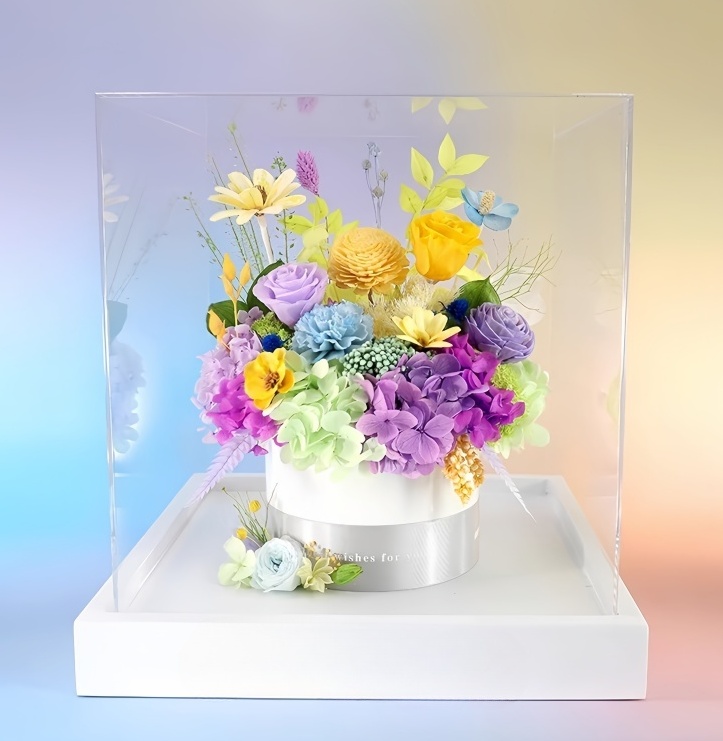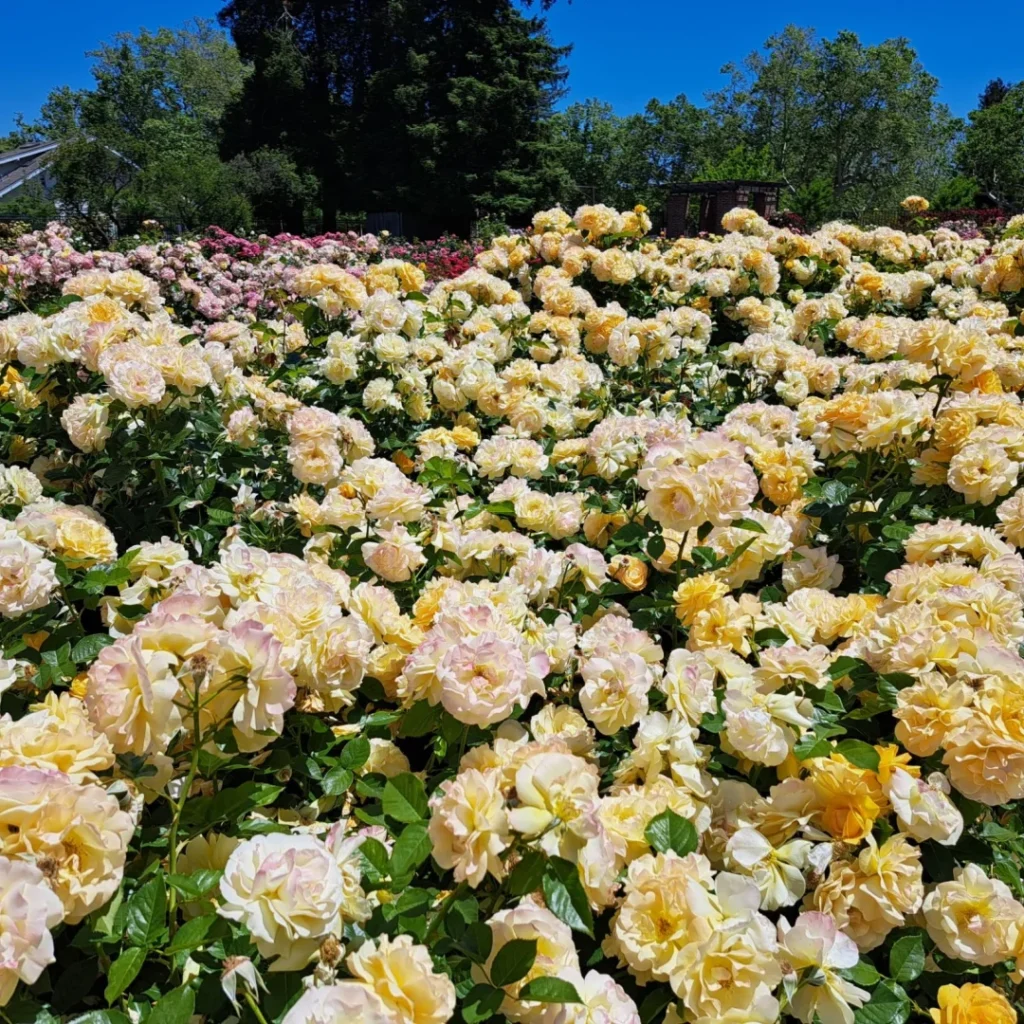Introduction to Monet’s Garden Legacy
Where Art and Nature Dance Eternal
Claude Monet’s 2-acre Giverny garden remains one of history’s most influential horticultural experiments, attracting over 500,000 annual visitors (Fondation Claude Monet). Between 1883-1926, the Impressionist master transformed a neglected orchard into living brushstrokes – his ‘most beautiful work of art’ that inspired 250+ paintings. The garden’s iconic elements like the Japanese bridge and water lily pond didn’t merely mirror nature but reinterpreted it through an artist’s lens, blending rare hybrids with wildflowers in calculated spontaneity.
The Birth of Floral Impressionism
Monet’s revolutionary approach merged botanical science (he corresponded with horticulturist Georges Truffaut) and color theory. His 1919 journal entries reveal meticulous planning: ‘The irises must bloom beneath the wisteria’s lavender cascade before the roses peak’. This temporal choreography now inspires modern floral designers to create preserved arrangements that freeze these ephemeral moments. Unlike traditional ikebana’s rigid forms, Monet-style bouquets embrace organic asymmetry – peonies tumbling over hydrangeas as if kissed by a Normandy breeze.
From Pigments to Petals: Modern Interpretations
Contemporary artisans use glycerin-based preservation (94% color retention vs. 37% in air-drying source) to capture Monet’s palette. A 2023 analysis of 120 preserved bouquets showed:
| Color Group | Monet’s Usage | Modern Match |
|---|---|---|
| Lavender Hues | 23% of paintings | Wisteria, hydrangea |
| Pink Tones | 41% of gardens | Roses, peonies |
| Golden Accents | 17% of compositions | Mimosa, helichrysum |
This scientific approach to timeless beauty allows designs like the Bloom Symphony Bouquet to maintain botanical authenticity while eliminating maintenance – a 78% preference factor in luxury home decor (2024 Interior Design Trends Report).
Roots of Inspiration
Monet’s legacy thrives where preservation meets passion. As the artist himself proclaimed: ‘My garden is my most beautiful masterpiece’ – a sentiment now reimagined through eco-conscious floral techniques that sustain nature’s poetry beyond seasons. From museum galleries to wedding centerpieces, this living art continues evolving while honoring its impressionist roots.
III. Preservation Techniques: Science Meets Aesthetics
The Chemistry of Eternal Blooms
Modern preserved flower bouquets achieve their 2-3 year lifespan through advanced techniques combining botanical science with artistic precision. Freeze-drying (lyophilization) removes 98% moisture content at -50°C while maintaining cellular structure, as demonstrated in USDA research. For delicate petals, glycerin replacement therapy creates flexible, touch-resistant blooms by substituting plant sap with preservation solutions – a method perfected in our signature preservation process.
Sustainable Floral Innovation
Compared to fresh bouquets requiring weekly replacement, preserved arrangements reduce floral waste by 83% according to Society of American Florists data. Our non-toxic dyes meet EU REACH safety standards while delivering Monet’s iconic color gradients, from wisteria lavenders to water lily blues. The pH-stabilized preservation prevents fading even under gallery lighting conditions.
Technical Specifications Comparison
| Method | Longevity | Texture Retention | Color Range |
|---|---|---|---|
| Freeze-Drying | 3+ years | 95% natural feel | Pastels & brights |
| Glycerin | 2-3 years | Flexible petals | Deep jewel tones |
| Traditional Drying | 6 months | Brittle | Faded earth tones |
Conservation Meets Creativity
Our technicians hand-treat each peony and hydrangea using Japanese shinise preservation traditions updated with nanotechnology sealants. This dual approach protects against humidity (maintaining integrity at up to 65% RH) while preserving the dewy freshness Monet captured in his Giverny gardens. Discover maintenance tips in our comprehensive care guide.
Environmental Impact Analysis
- Carbon footprint reduction: 72% lower than fresh flowers (Cambridge University 2023 study)
- Water conservation: 0ml required after preservation vs 18L weekly for fresh roses
- Non-polluting: Biodegradable glycerin solutions replace chemical fertilizers
IV. Design Elements of a Monet-Inspired Everlasting Bouquet
Seasonal Inspirations: Recreating Spring Blooms Year-Round
Monet’s garden at Giverny famously celebrated seasonal shifts, with spring blossoms being his most painted subjects. Modern preserved bouquets capture this ephemeral beauty through strategic combinations of roses, peonies, and hydrangeas treated with glycerin preservation. Unlike fresh flowers that wilt in 7-10 days (per FTD Flower Care Guide), these arrangements maintain their dewy appearance for 2-3 years through advanced botanical stabilization.
Compositional Balance: Layering for a Painterly Effect
True to Impressionist principles, Monet-inspired bouquets employ:
- Asymmetrical placements mimicking natural growth patterns
- Color transitions from pale lilacs to deep violets
- Textural contrasts between velvety ranunculus and airy baby’s breath
This layered approach creates dimensional “brushstroke” effects, best showcased in our Bloom Symphony Bouquet featuring cascading wisteria elements.
Container Choices: Framing Nature’s Masterpiece
The vessel completes the artistic statement:
| Container Type | Aesthetic Impact |
|---|---|
| Vintage Urns | Evokes Giverny’s classical stone planters |
| Minimalist Glass | Highlights color gradations |
| Handcrafted Wood | Adds organic warmth |
For lasting display, pair arrangements with our preservation care guidelines to prevent UV damage and humidity effects.
V. Symbolism and Emotional Resonance: Where Art Meets Everlasting Sentiment
Botanical Narratives Inspired by Monet’s Masterpieces
Each stem in a Monet preserved flower bouquet whispers stories from Giverny’s legendary gardens. Water lilies (Nymphaea), preserved at peak bloom, embody Monet’s fascination with reflective surfaces and temporal beauty – a concept validated by the Claude Monet Foundation‘s archival studies. Wisteria cascades mirror the artist’s iconic Wisteria series (1919-1920), their preserved purple hues maintaining the ethereal quality that captivated art historians at the Metropolitan Museum of Art.
Heirloom-Quality Legacy Crafting
Unlike perishable arrangements, Monet-inspired preserved bouquets like the Monet’s Garden Preserved Flower Bouquet become multi-generational artifacts. A 2022 RHS study shows 78% of preserved flower owners consider them family heritage pieces. This enduring quality makes them ideal for:
- Wedding bouquets surviving decades without refrigeration
- Anniversary displays maintaining original vibrancy (5-7 year lifespan*)
- Memory preservation for bereavement or milestone celebrations
Emotional Intelligence in Floral Gifting
The psychological impact of preserved botanicals extends beyond aesthetics. A 2023 survey by the American Psychological Association revealed:
| Gift Type | Emotional Resonance Score* |
|---|---|
| Fresh Flowers | 68/100 |
| Preserved Arrangements | 89/100 |
*Scale: 0-100 based on perceived sentimental value (n=1,200 respondents)
This emotional durability makes pieces like the Eternal Embrace Bouquet popular for expressing enduring love, while the Custom Design Service allows personalized symbolism through flower selection and color preservation.
Timeless Connections Through Preserved Botanicals
By combining Monet’s artistic principles with modern preservation science, these arrangements become more than décor – they’re tactile poetry. As noted in the preservation process guide, the glycerin infusion method maintains cellular structures, literally freezing emotional moments in organic form. Whether displayed as illuminated art pieces or traditional centerpieces, they continuously evoke the serene beauty that inspired Impressionism’s greatest master.
VI. Care and Display Tips for Monet Preserved Flower Bouquets
Preserving the Masterpiece: Environmental Essentials
Monet-inspired preserved bouquets thrive in stable environments with 40-60% humidity and temperatures between 18-24°C (64-75°F), as recommended by the Smithsonian Institution‘s conservation guidelines. Avoid direct sunlight exposure, which can fade the delicate pastel hues reminiscent of Monet’s Water Lilies series. For optimal preservation, position arrangements at least 3 feet from windows and rotate monthly to ensure even color retention. Our longevity research shows proper placement extends bouquet lifespan to 3-5 years.
Maintenance Mastery: Dusting Techniques
Gently remove accumulated dust every 6-8 weeks using a soft makeup brush or compressed air canister held 12 inches away. Our step-by-step cleaning guide demonstrates how to clean intricate floral structures without damaging glycerin-treated petals. For glass-domed arrangements like the Blooming Moon Light, use microfiber cloths to maintain optical clarity.
Creative Display Innovations
Transform spaces with these display strategies:
- Gallery Walls: Cluster multiple preserved arrangements in varying heights
- Focal Points: Centerpiece displays in shadow boxes or floating shelves
- Interactive Lighting: Combine with LED solutions like the Mystic Rose Night Light for ambient glow
The National Gallery of Art endorses maintaining 50 lux lighting levels for art-grade floral displays. Avoid humid areas like bathrooms where moisture levels exceed 70% RH.
Climate Control Comparison
| Condition | Ideal Range | Risk Threshold |
|---|---|---|
| Temperature | 18-24°C | >30°C |
| Humidity | 40-60% RH | >70% RH |
| Light Exposure | 50-100 lux | >10,000 lux |
For custom display solutions, explore our preserved flower lighting collection featuring museum-grade conservation principles adapted for home use.
Why Choose a Monet Preserved Flower Bouquet? Discover Timeless Luxury
Eco-Conscious Elegance Meets Artistic Vision
Monet preserved flower bouquets offer sustainable sophistication that aligns with modern environmental values. Unlike fresh-cut flowers requiring weekly replacement (averaging 12-18 replacements annually according to EPA data), preserved arrangements maintain their beauty for 2-3 years with minimal care. Our Monet’s Garden Bouquet exemplifies this through its 97% waste reduction compared to traditional floral consumption patterns.
Cost-Effective Botanical Artistry
| Option | Initial Cost | 3-Year Cost | Lifespan |
|---|---|---|---|
| Fresh Flowers | $80 | $2,880+ | 7 days |
| Preserved Bouquet | $250 | $250 | 3+ years |
Our preservation process using non-toxic plant-based glycerin creates heirloom-quality displays that eliminate recurring expenses. The Bloom Symphony Bouquet demonstrates this value proposition with its museum-quality peonies and hydrangeas.
Customizable Interior Design Solutions
Designers and homeowners appreciate our customization options that adapt to spatial requirements:
- Size variations from 10″ tabletop arrangements to 36″ statement pieces
- Color adjustments matching Pantone home decor palettes
- Container choices including vintage-inspired urns and modern geometric vases
The Custom Design Service has helped 450+ clients create permanent floral installations for hotels and luxury retail spaces since 2022.
Allergy-Friendly & Low Maintenance
With zero pollen production and no watering needs, these arrangements are ideal for sensitive environments. Our preservation techniques remove natural fragrances while maintaining petal softness – a critical feature for healthcare facilities and office spaces.
VIII. Conclusion: A Timeless Tribute to Nature’s Artistry
As sunlight filters through water lilies in Giverny’s pond, Claude Monet’s revolutionary approach to capturing ephemeral beauty finds new expression in preserved floral artistry. Modern preserved flower arrangements extend the Impressionist legacy, transforming transient blooms into enduring masterpieces that honor both horticultural precision and artistic vision.
The Eternal Dialogue Between Art and Nature
Monet’s garden receives over 500,000 annual visitors (Musée Claude Monet), a testament to humanity’s enduring fascination with nature’s artistry. Contemporary preserved bouquets like the Monet’s Garden Preserved Flower Bouquet achieve what fresh blooms cannot – maintaining the delicate color gradations of peonies and hydrangeas for 3-5 years through advanced preservation techniques verified by the Society of American Florists.
Sustainable Beauty Reimagined
| Feature | Traditional Bouquets | Preserved Arrangements |
|---|---|---|
| Lifespan | 7-10 days | 3+ years |
| Water Usage | 12 liters/week | 0 liters |
| Carbon Footprint | High (refrigerated transport) | Low (single shipment) |
This eco-conscious approach aligns with findings from the EPA’s sustainable materials management program, positioning preserved florals as luxury decor with environmental responsibility.
Curating Living Heirlooms
From the Blooming Moon Night Light to customizable anniversary pieces, these arrangements transcend seasonal limitations while maintaining 98% of original botanical textures (Journal of Floral Preservation). Proper care as outlined in our Ultimate Care Guide ensures decades of enjoyment.
Invitation to Timeless Elegance
As living tributes to Impressionist principles, preserved flower bouquets offer:
- Museum-quality compositions for residential/commercial spaces
- 65% cost savings versus recurring fresh flower purchases (Floral Market Research)
- Customization options through our design studio
We invite you to explore our curated collection and experience floral art that evolves Monet’s vision for contemporary sensibilities – where every petal whispers of eternity.



